Reunion: Carrell Courtright, Megan Davis and Tarra Wood
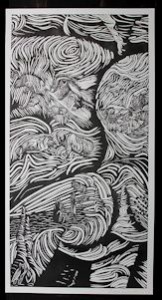 The ArtLab Gallery of the Bower School of Music & the Arts at Florida Gulf Coast University (FGCU) presents “Reunion: Carrell Courtright, Megan Davis and Tarra Wood” with an artist talk Thursday, October 15. The evening will begin at 5 p.m. and will feature an introduction of works by the artists themselves, followed by a reception and open mic event until 7 p.m. The exhibition runs through November 5, and is sponsored in part by WGCU Public Media and U. Tobe.
The ArtLab Gallery of the Bower School of Music & the Arts at Florida Gulf Coast University (FGCU) presents “Reunion: Carrell Courtright, Megan Davis and Tarra Wood” with an artist talk Thursday, October 15. The evening will begin at 5 p.m. and will feature an introduction of works by the artists themselves, followed by a reception and open mic event until 7 p.m. The exhibition runs through November 5, and is sponsored in part by WGCU Public Media and U. Tobe.
“Reunion” is the second in an annual series, and will provide consistent programming to bring together select alumni from FGCU’s Art Program. This exhibition showcases artists working in a variety of mediums, highlighting work created as professional artists since graduating from FGCU.
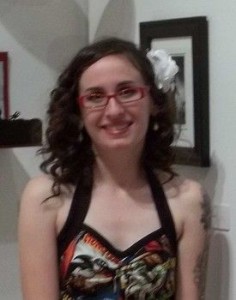 For this season’s “Reunion,” Carrell Courtright, ’10; Megan Davis, ’13; and Tarra Wood, ’11 have come together to reveal a varied stylistic mixture that offers commentary on social values, environmental analogies, and an examination of the human psyche and our behaviors.
For this season’s “Reunion,” Carrell Courtright, ’10; Megan Davis, ’13; and Tarra Wood, ’11 have come together to reveal a varied stylistic mixture that offers commentary on social values, environmental analogies, and an examination of the human psyche and our behaviors.
The ArtLab Gallery is at the west side of the Library building on FGCU’s main campus at 10501 FGCU Blvd. S. Parking is available in Lot 7 for gallery visitors; parking passes are available at the Parking Information Booth at the university’s main entrance. Regular viewing hours are from 10 a.m. to 4 p.m. Monday through Wednesday and Friday and from 10 a.m. to 7 p.m. on Thursdays.
For further information on this exhibition and others, please visit artgallery.fgcu.edu or call Anica Sturdivant at (239) 590-7199, or asturdiv@fgcu.edu. And read below for more articles, reviews and announcements about the artists included in this exhibit.
* * * * * * * * * * * * * * * * * * * * * * * * * * * * * * * * * * * *
‘Reunion’ closes November 5 (11-01-15)
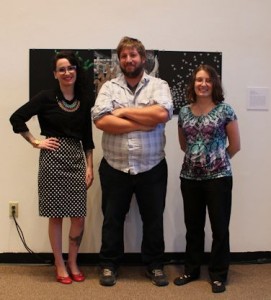 Reunion: Carrell Courtright, Megan Davis and Tarra Wood closes November 5. Sponsored in part by WGCU Public Media and U. Tobe, Reunion continues FGCU’s commitment to alumni artists to provide a forum at which they can create and present exhibitions showcasing their talent and the positive impact that the Art Program at FGCU is having on the region. This year, Reunion features work by Carrell Courtright (’10), Megan Davis (’13), and Tarra Wood (’11) who together present a stylistic mixture that offers commentary on social values, environmental analogies, and the interplay between the human psyche and our behavior.
Reunion: Carrell Courtright, Megan Davis and Tarra Wood closes November 5. Sponsored in part by WGCU Public Media and U. Tobe, Reunion continues FGCU’s commitment to alumni artists to provide a forum at which they can create and present exhibitions showcasing their talent and the positive impact that the Art Program at FGCU is having on the region. This year, Reunion features work by Carrell Courtright (’10), Megan Davis (’13), and Tarra Wood (’11) who together present a stylistic mixture that offers commentary on social values, environmental analogies, and the interplay between the human psyche and our behavior.
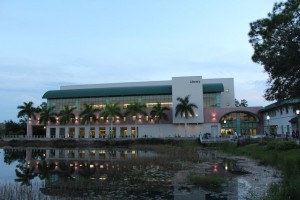 Reunion is on display in the FGCU ArtLab. The ArtLab Gallery is at the west side of the Library building on FGCU’s main campus at 10501 FGCU Blvd. S. Parking is available in Lot 7 for gallery visitors; parking passes are available at the Parking Information Booth at the university’s main entrance. Regular viewing hours are from 10 a.m. to 4 p.m. Monday through Wednesday and
Reunion is on display in the FGCU ArtLab. The ArtLab Gallery is at the west side of the Library building on FGCU’s main campus at 10501 FGCU Blvd. S. Parking is available in Lot 7 for gallery visitors; parking passes are available at the Parking Information Booth at the university’s main entrance. Regular viewing hours are from 10 a.m. to 4 p.m. Monday through Wednesday and 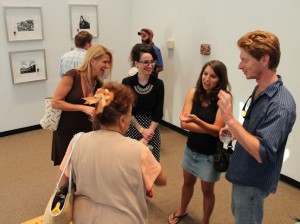 Friday and from 10 a.m. to 7 p.m. on Thursdays.
Friday and from 10 a.m. to 7 p.m. on Thursdays.
For further information on this exhibition and others, please visit artgallery.fgcu.edu or call Anica Sturdivant at (239) 590-7199, or asturdiv@fgcu.edu. And read below for more articles, reviews and announcements about the artists included in this exhibit.
__________________________________________________________________________
For FGCU alum Megan Davis, participating in ‘Reunion’ show is dream come true (10-23-15)
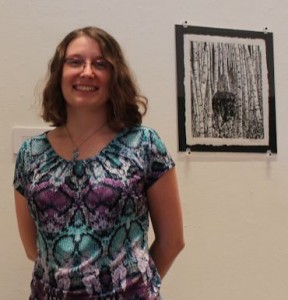 As they were discussing their upcoming participation in Reunion, fellow artist Tarra Wood told Megan Davis that she makes and sells small ceramic sculptures on Etsy so that she can afford to follow her dream of being a professional artist. That remark sparked an idea for the show. “I said, ‘Why don’t I do linocuts of my dreams?’ So these are prints of some of my more unusual dreams. I cannot explain them. Perhaps some psychologist can.” But in the meantime, you can provide your own interpretations when you take in the show, which is on display inside
As they were discussing their upcoming participation in Reunion, fellow artist Tarra Wood told Megan Davis that she makes and sells small ceramic sculptures on Etsy so that she can afford to follow her dream of being a professional artist. That remark sparked an idea for the show. “I said, ‘Why don’t I do linocuts of my dreams?’ So these are prints of some of my more unusual dreams. I cannot explain them. Perhaps some psychologist can.” But in the meantime, you can provide your own interpretations when you take in the show, which is on display inside 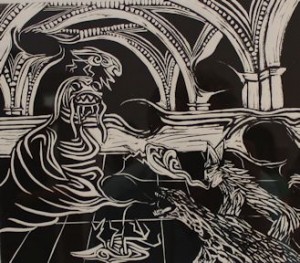 the FGCU ArtLab Gallery in Library East through November 5.
the FGCU ArtLab Gallery in Library East through November 5.
Davis chose to produce her prints in black and white. “But I always dream in color,” she wryly observes. And printing in monotone presented Davis with no small difficulty because she really needed color to properly convey the content of some of her nocturnal musings.
“There have been studies on this, and the findings 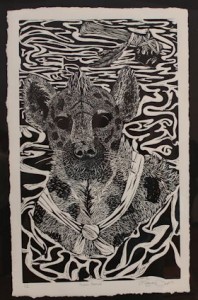 are interesting,” Megan continues. “People only used to dream in black and white, but they started dreaming in color after the introduction of color television.”
are interesting,” Megan continues. “People only used to dream in black and white, but they started dreaming in color after the introduction of color television.”
There are still people who claim they don’t dream in color. Davis questions this conclusion. “If I tell you to think of a zebra, you can clearly picture a zebra. But if I tell you to count the stripes, you can’t. That’s because memory is about categorization. So it’s possible that some of the people who claim they only dream in black and white actually dream in color but don’t recall the precise colors of their dreams and are instead left with the impression that they were in black and white.”
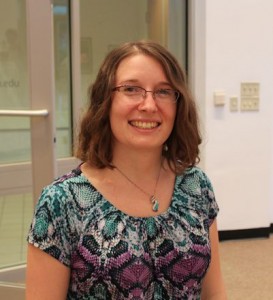 Because visual media has grown in use and importance, the studies find that college-age people rarely report black-and-white dreams, either when asked about their dreams in general or when completing dream diaries. Older folks (aged about 55-75 years) more commonly report black and white dreams, but even in this group the rates of reported black and white dreams (22%) don’t approach the levels of 50 or 60 years ago.
Because visual media has grown in use and importance, the studies find that college-age people rarely report black-and-white dreams, either when asked about their dreams in general or when completing dream diaries. Older folks (aged about 55-75 years) more commonly report black and white dreams, but even in this group the rates of reported black and white dreams (22%) don’t approach the levels of 50 or 60 years ago.
But we digress. “Each of these prints has its own unique story,” Megan points out. “For example, this one is based on one of those dreams we’ve all had 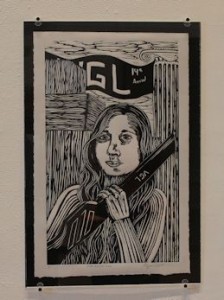 where you show up at work or for a class only to find that you aren’t wearing pants. Here, I’m in a big stadium and there’s this game going on where the contestants have toy guns, and I’m hiding behind mine hoping that no one sees that I’m not wearing any clothes.”
where you show up at work or for a class only to find that you aren’t wearing pants. Here, I’m in a big stadium and there’s this game going on where the contestants have toy guns, and I’m hiding behind mine hoping that no one sees that I’m not wearing any clothes.”
But the beauty of Megan’s pieces in the show is that the viewer can attach any story and any interpretation to the prints they want. Since everyone’s dream life is different, there will be as many interpretations as there are viewers. Maybe more.
Content aside, there’s much to admire in Megan’s work in terms of the technical aspects of the printmaking process and end result. 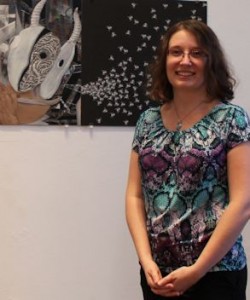 “I’m attracted to printmaking because it combines the technicality of drawing with the passion of painting,” says Megan. “In addition, the process is very repetitive, very Zen-like.”
“I’m attracted to printmaking because it combines the technicality of drawing with the passion of painting,” says Megan. “In addition, the process is very repetitive, very Zen-like.”
But it’s also very counter-intuitive. It is the untouched portions of the linoleum that produce the blacks you see in each print, necessitating that the artist cut away those areas where she wants the print to be white. “Plus, you’re working backwards, which is especially challenging when it comes to lettering,” Megan laughs, reflecting on how she sometimes gets all turned around as she carves each block.
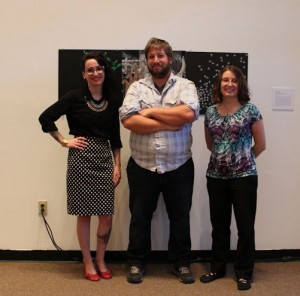 The result, though, is worth the effort. There’s much to admire in the intricate lines and marks that work together to make the dreamlike, dream-state imagery in Davis’ compositions.
The result, though, is worth the effort. There’s much to admire in the intricate lines and marks that work together to make the dreamlike, dream-state imagery in Davis’ compositions.
Megan Davis graduated from FGCU in 2013 with a dual degree in art and psychology. She uses linocuts, woodcuts, and collographic prints to draw aspects of art history and psychological concepts together for her viewers. Davis incorporates her keen interest in art therapy as part of her compositions. Her ultimate goal 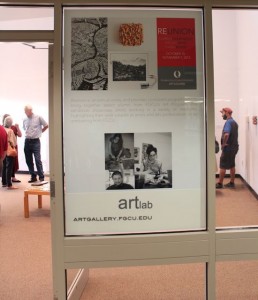 is to become an art therapist for children. Davis is currently a substitute art teacher for Lee County and is working on her teaching certification with FGCU’s Teacher Immersion Program. She recently completed her second summer teaching at BIG Arts Summer Arts Camp. Her linocut series entitled “When Wolves Run” was exhibited in Grand Rapids, Michigan as part of the 2013 ArtPrize, an independently organized international art competition.
is to become an art therapist for children. Davis is currently a substitute art teacher for Lee County and is working on her teaching certification with FGCU’s Teacher Immersion Program. She recently completed her second summer teaching at BIG Arts Summer Arts Camp. Her linocut series entitled “When Wolves Run” was exhibited in Grand Rapids, Michigan as part of the 2013 ArtPrize, an independently organized international art competition.
You, too, can enjoy Megan Davis’ linocut prints. They’re on view now inside the ArtLab Gallery. The ArtLab Gallery is open Monday through Friday from 10 a.m. to 4 p.m., with extended hours on Thursday until 7 p.m.
___________________________________________________
Spotlight on FGCU ‘Reunion’ alum Carrell Courtright (10-22-15)
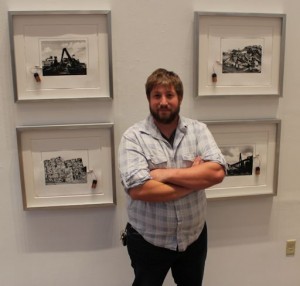 On view now in the ArtLab at Florida Gulf Coast University is Reunion: Courtright, Davis and Wood. As the name belies, one of the artists with work in the show is 2010 art graduate Carrell Courtright.
On view now in the ArtLab at Florida Gulf Coast University is Reunion: Courtright, Davis and Wood. As the name belies, one of the artists with work in the show is 2010 art graduate Carrell Courtright.
Courtright’s contribution to the exhibition is intriguing. His part of the show consists of eight original photographs from his Movement Series that are printed on screen using electrical conduit paint. Mounted to each is a LED light operated by 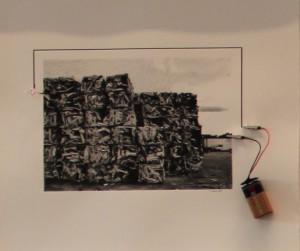 a 9 volt battery that lets the viewer know that current is actually moving through the composition.
a 9 volt battery that lets the viewer know that current is actually moving through the composition.
The images in these works were shot at Garden Street Iron & Metal recycling plant. Admittedly dreary, bordering on depressing, they depict piles of scrap metal, tin and other recyclable material that area residents bring to Garden Street on a daily basis. Garden Street pays for the scrap based 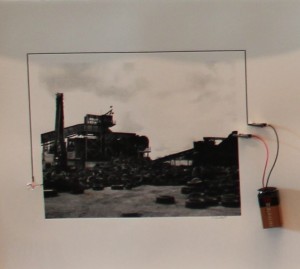 on its weight and then sorts, packages and resells the material to plants around the country that melt it down and use the metal to fabricate new products.
on its weight and then sorts, packages and resells the material to plants around the country that melt it down and use the metal to fabricate new products.
“It’s a sustainable business model for everyone involved,” Courtright remarks. “What’s more, Garden St. built their facility on a heavily polluted tract of land that was once the site of an old lumber mill where they pressure treated wood. The chemicals they used leached into the soil and 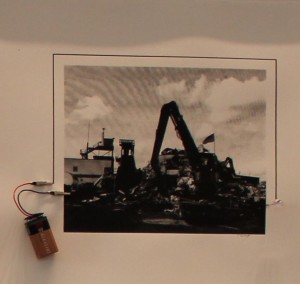 groundwater, so the land wasn’t good for much else. Garden St. put in a whole bunch of wells, and they barrel up the water and dispose of it properly with all of its heavy metals. So on one level, they’re extracting all the pollutants and cleaning the land. On another, they’re recycling stuff that would otherwise end up in a dump or landfill somewhere.”
groundwater, so the land wasn’t good for much else. Garden St. put in a whole bunch of wells, and they barrel up the water and dispose of it properly with all of its heavy metals. So on one level, they’re extracting all the pollutants and cleaning the land. On another, they’re recycling stuff that would otherwise end up in a dump or landfill somewhere.”
From Courtright’s perspective, more companies need to emulate Garden St. Iron & Metal. “For me, 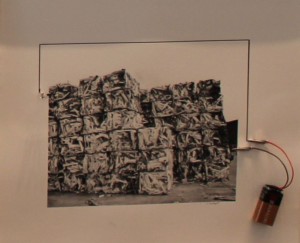 this is a prerequisite of a proper way to think in terms of business practices,” Courtright explains. “Sure, they’re concerned with their bottom line, but they are also cleaning the environment, which is a sustainable way to live. They’re being responsible on multiple levels.”
this is a prerequisite of a proper way to think in terms of business practices,” Courtright explains. “Sure, they’re concerned with their bottom line, but they are also cleaning the environment, which is a sustainable way to live. They’re being responsible on multiple levels.”
Courtright wants everyone to think and act more responsibly toward the environment. “Not just individually, but as a community too,” Carrell 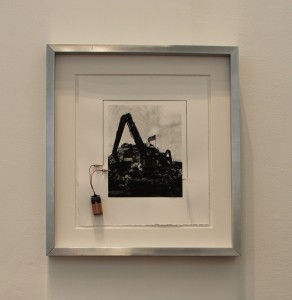 argues. “Our culture needs to start taking responsibility for the environment and the ecology.” But he is cognizant that large sections of the country do not currently share his sentiment. A large percentage of people even deny that human activity plays any role in phenomenon such as climate change and the extreme weather the planet has been experiencing since the turn of the century.
argues. “Our culture needs to start taking responsibility for the environment and the ecology.” But he is cognizant that large sections of the country do not currently share his sentiment. A large percentage of people even deny that human activity plays any role in phenomenon such as climate change and the extreme weather the planet has been experiencing since the turn of the century.
And that leads Courtright to nod toward the battery-operated LED. “In my compositions, electricity is a metaphor for the thoughts, ideas, fads and trends 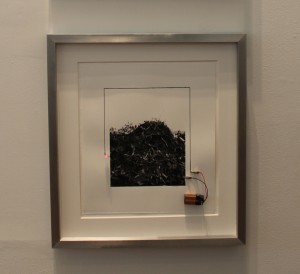 that run through our culture and change the way in which we think individually and as a society,” Courtright comments. “Electricity is a good representation of that because the way we think about things is constantly changing. Eventually, the battery will run down. Likewise, many of the concepts we are talking about today will also wind down. We have to be conscious about and monitor this to make sure they become set in our culture until they become sustainable.”
that run through our culture and change the way in which we think individually and as a society,” Courtright comments. “Electricity is a good representation of that because the way we think about things is constantly changing. Eventually, the battery will run down. Likewise, many of the concepts we are talking about today will also wind down. We have to be conscious about and monitor this to make sure they become set in our culture until they become sustainable.”
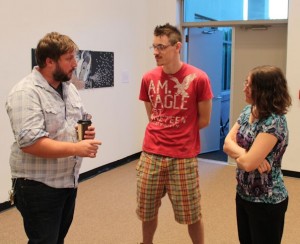 The eight works in Reunion are just the beginning of a larger project. “The next series will substitute a photocell with a small capacitor for the battery,” teases Courtright. “The new pieces will still have an LED indicator to confirm that current is running through the composition, but solar cells represent sustainable, renewable energy. The project will continue to focus on things I believe are set in our culture that we need to correct or
The eight works in Reunion are just the beginning of a larger project. “The next series will substitute a photocell with a small capacitor for the battery,” teases Courtright. “The new pieces will still have an LED indicator to confirm that current is running through the composition, but solar cells represent sustainable, renewable energy. The project will continue to focus on things I believe are set in our culture that we need to correct or 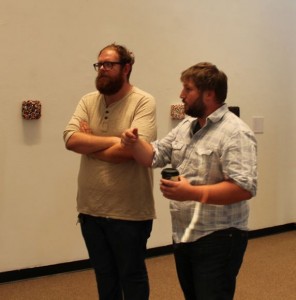 change. But continuing to use electricity as a metaphor for us as a people, as a culture, how that changes … Electricity is always moving.”
change. But continuing to use electricity as a metaphor for us as a people, as a culture, how that changes … Electricity is always moving.”
The concepts expressed by Courtright’s current body of work is not the continuation of anything that he did while a student at FGCU. “I was formulating the ideas but didn’t actually start working on this series until a couple of years ago. In fact, when I was here, FGCU did not offer photography or any digital classes.”
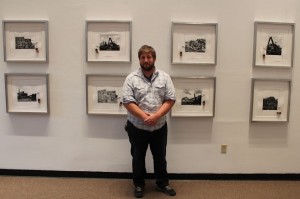 Courtright is versatile, often picking up new techniques, technology and new media on the fly. It’s an attribute that serves him well as the Studio Assistant for the Rauschenberg Residency Program, where is called upon to make sure that the artists in residency have everything they need during their brief stays at the Bob Rauschenberg compound on Captiva. “We pride ourselves on
Courtright is versatile, often picking up new techniques, technology and new media on the fly. It’s an attribute that serves him well as the Studio Assistant for the Rauschenberg Residency Program, where is called upon to make sure that the artists in residency have everything they need during their brief stays at the Bob Rauschenberg compound on Captiva. “We pride ourselves on 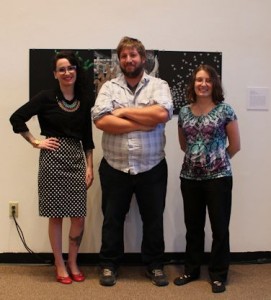 not being ‘no’ people. It’s up to me to figure out a way to enable the artists accomplish their ideas and implement their plans.”
not being ‘no’ people. It’s up to me to figure out a way to enable the artists accomplish their ideas and implement their plans.”
Reunion is on view inside the ArtLab Gallery in Library East through November 5. The ArtLab Gallery is open Monday through Friday from 10 a.m. to 4 p.m., with extended hours on Thursday until 7 p.m.
_______________________________________________________________
FGCU art alum Tarra Wood indulges passion for ceramic sculpture (10-20-15)
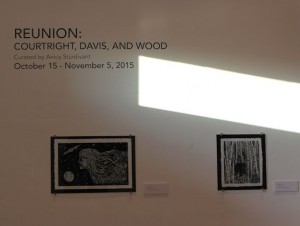 Reunion opened last week in the FGCU ArtLab. One of the art alum featured in the show is Tarra Wood.
Reunion opened last week in the FGCU ArtLab. One of the art alum featured in the show is Tarra Wood.
Wood has five wall-hanings in the exhibition, cryptically named Beans, Butts, Candy, Pills and Crack. When you first approach these pieces, it looks like Wood epoxied piles of coffee beans, cigarette butts, candy, pills and crack into small 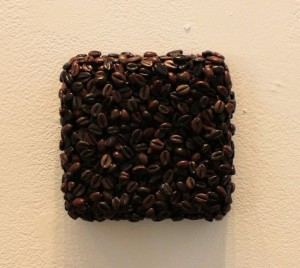 rectangular cubes. But upon closer inspection, it becomes clear that Wood separately crafted each bean, each butt, each piece of candy and pill out of oven-baked polymer clay which she then bonded together into a coheseive whole before painstakingly colorizing them with acrylic paint.
rectangular cubes. But upon closer inspection, it becomes clear that Wood separately crafted each bean, each butt, each piece of candy and pill out of oven-baked polymer clay which she then bonded together into a coheseive whole before painstakingly colorizing them with acrylic paint.
“I’ve been working on this series for about two years,” Tarra reports. “It’s a cool way to explore different vices and addictions. Personally, mine is coffee. I only buy whole beans and grind them up 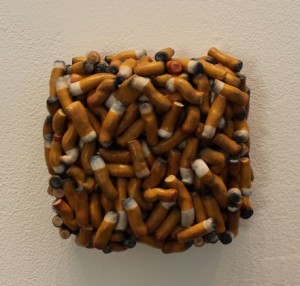 fresh,” she adds, pointing lovingly at the dark mass of roasted coffee beans hanging on the right-hand ArtLab wall. “Most of my pieces are very time-consuming, and I discovered as I worked on them that they became my own little addiction.”
fresh,” she adds, pointing lovingly at the dark mass of roasted coffee beans hanging on the right-hand ArtLab wall. “Most of my pieces are very time-consuming, and I discovered as I worked on them that they became my own little addiction.”
Butts was actually the seminal piece in the series. “I did it because I thought it would look cool and enable me to combine the two disciplines I love most, ceramics and painting,” Tarra explains. “At the time, I thought the concept could grow into a 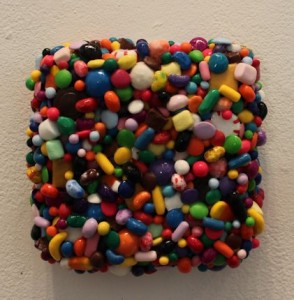 series that explores many different vices. I have more that I’d like to create, and eventually I’d like to make bigger pieces with thousands of components in them. I also plan to explore other shapes, such as spheres, which might even allow me to incorporate some found objects along with the ceramic components.”
series that explores many different vices. I have more that I’d like to create, and eventually I’d like to make bigger pieces with thousands of components in them. I also plan to explore other shapes, such as spheres, which might even allow me to incorporate some found objects along with the ceramic components.”
The work that Wood exhibited during her senior year was mainly graphite drawings, but even then she focused primarily on ceramic sculpture. “I took a lot of [Professor] Andy Owen’s drawing classes, 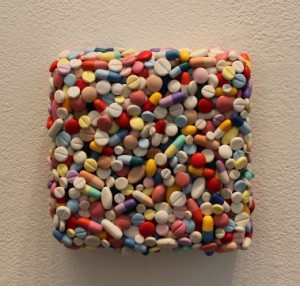 and dabbled in everything. But I was the Ceramic Studio Assistant. Ceramics is my first love.” Although she is a gifted realist painter who excels at portraiture, the Aesthetic Vices series enables Tarra to explore, develop and perfect the art of ceramic sculpting going forward.
and dabbled in everything. But I was the Ceramic Studio Assistant. Ceramics is my first love.” Although she is a gifted realist painter who excels at portraiture, the Aesthetic Vices series enables Tarra to explore, develop and perfect the art of ceramic sculpting going forward.
Ceramic sculpture not only allows Wood to indulge her own addiction, but utilize what she learned during her time at FGCU on a daily basis. Most think that people go to college to learn a body of 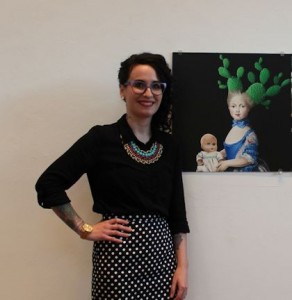 knowledge. “What I took away from FGCU was work ethic, self-motivation and the ability to complete projects,” Wood emphasizes. More than facts, figures, process and technique, she learned how to size up a project, break it into steps, and then fashion a timetable for completing each step and the overall project as well.
knowledge. “What I took away from FGCU was work ethic, self-motivation and the ability to complete projects,” Wood emphasizes. More than facts, figures, process and technique, she learned how to size up a project, break it into steps, and then fashion a timetable for completing each step and the overall project as well.
Participating in Reunion gives Tarra Wood the chance to reflect on both her college career and ultimate goal of establishing herself as a professional artist. In the meantime, she is making and selling 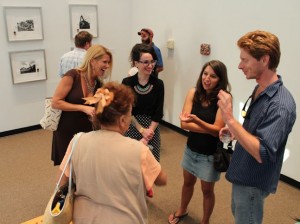 small works on Etsy, participating in group shows in galleries and honing her skills as both a painter and ceramic sculptor. Beans, Butts, Candy, Pills and Crack are on view now in the FGCU ArtLab. It’s located in the library. Courtright, Davis & Wood will run through November 5. The ArtLab Gallery is open Monday through Friday from 10 a.m. to 4 p.m., with extended hours on Thursday until 7 p.m.
small works on Etsy, participating in group shows in galleries and honing her skills as both a painter and ceramic sculptor. Beans, Butts, Candy, Pills and Crack are on view now in the FGCU ArtLab. It’s located in the library. Courtright, Davis & Wood will run through November 5. The ArtLab Gallery is open Monday through Friday from 10 a.m. to 4 p.m., with extended hours on Thursday until 7 p.m.
_________________________________________________________________________
When FGCU last saw Megan Davis (10-13-15)
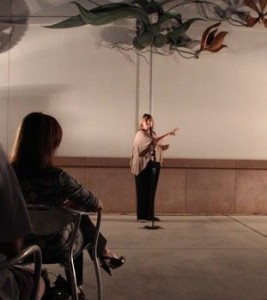 When we last saw FGCU art grad Megan Davis, she was greeting newcomers to the Fall 2012 Senior Projects Exhibition with a ready smile, assessing eyes and quiet confidence as she stood waiting in front of a grouping of nine black-and-white prints hung tightly together in order to give the illusion of a singular piece. “They’re based on an old surrealist parlor game called the Exquisite Corpse,” Megan stated matter-of-factly by way of introduction to her installation on the far wall of the Florida Gulf Coast University Art Gallery.
When we last saw FGCU art grad Megan Davis, she was greeting newcomers to the Fall 2012 Senior Projects Exhibition with a ready smile, assessing eyes and quiet confidence as she stood waiting in front of a grouping of nine black-and-white prints hung tightly together in order to give the illusion of a singular piece. “They’re based on an old surrealist parlor game called the Exquisite Corpse,” Megan stated matter-of-factly by way of introduction to her installation on the far wall of the Florida Gulf Coast University Art Gallery.
In the parlor game, the first participant writes a phrase 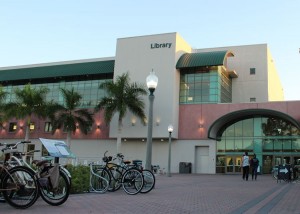 or sentence on a sheet of paper, folds it to conceal part of the writing, and then passes it to the next player for a further contribution. Nicolas Calas characterized the resulting fragment as the “unconscious expression of the personality of the group” through a process that Max Ernst called “mental contagion.” Surrealism founder André Breton reported that cadavre exquis started in fun
or sentence on a sheet of paper, folds it to conceal part of the writing, and then passes it to the next player for a further contribution. Nicolas Calas characterized the resulting fragment as the “unconscious expression of the personality of the group” through a process that Max Ernst called “mental contagion.” Surrealism founder André Breton reported that cadavre exquis started in fun 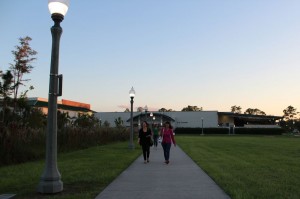 but quickly proved effective for enabling surrealists to exploit the mystique of accidental relationships. Breton claimed surrealists began using the technique around 1925 (although art historian Pierre Reverdy claimed that its use dates back to some time prior to 1918).
but quickly proved effective for enabling surrealists to exploit the mystique of accidental relationships. Breton claimed surrealists began using the technique around 1925 (although art historian Pierre Reverdy claimed that its use dates back to some time prior to 1918).
The game was later adapted to drawing, and served as the starting point for Davis’ linocut prints.
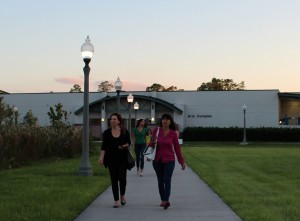 “I asked my friends to make me some drawings,” Megan explained that night. “I instructed them to incorporate lines overflowing from the drawing before into their drawing, and to draw to the edges of the paper. Their individual images all flowed into each other, creating, as a whole, a strange juxtaposition.”
“I asked my friends to make me some drawings,” Megan explained that night. “I instructed them to incorporate lines overflowing from the drawing before into their drawing, and to draw to the edges of the paper. Their individual images all flowed into each other, creating, as a whole, a strange juxtaposition.”
Davis used these drawings to make larger, more 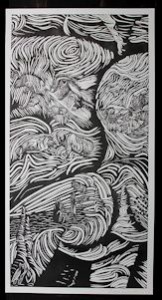 refined drawings, and then transferred the drawings to linocuts, which have been used by artists from Pablo Picasso to Henri Matisse to make prints. In essence, it’s a subtractive method that uses linoleum instead of wood in order to print images on highly-absorbent paper. The artist cuts away the portions of the linoleum she doesn’t want to receive ink when the linoleum is pressed to the paper. Those sections will therefore appear white in the printed image, with everything else coming out black. There are no greys, no shading, no range of values. “By sticking with black and white, it allows the viewer’s eye to more readily accept the closely-hung pieces as part of a singular large piece.”
refined drawings, and then transferred the drawings to linocuts, which have been used by artists from Pablo Picasso to Henri Matisse to make prints. In essence, it’s a subtractive method that uses linoleum instead of wood in order to print images on highly-absorbent paper. The artist cuts away the portions of the linoleum she doesn’t want to receive ink when the linoleum is pressed to the paper. Those sections will therefore appear white in the printed image, with everything else coming out black. There are no greys, no shading, no range of values. “By sticking with black and white, it allows the viewer’s eye to more readily accept the closely-hung pieces as part of a singular large piece.”
It is also encourages the brain to do what it is wired to do, namely, find relationships even where none was intended. “The subconscious mind tries to 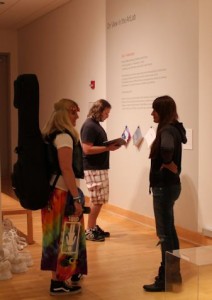 fit the pieces of the puzzle together, linking what may be otherwise unconnected ideas to form new ideas. The contrast and mark making also allows for parallel processing, which is the brain’s ability to process visual data through a bottom-up approach (looking at individual angles, colors, and building them up together) and top-down approach (recognizing objects and their meanings based on memories).”
fit the pieces of the puzzle together, linking what may be otherwise unconnected ideas to form new ideas. The contrast and mark making also allows for parallel processing, which is the brain’s ability to process visual data through a bottom-up approach (looking at individual angles, colors, and building them up together) and top-down approach (recognizing objects and their meanings based on memories).”
To make her work even more provocative and complex, Davis manipulates the marks and images within each drawing/print. “This allows one to have many possible meanings for an image in one’s subconscious, but consciously aware of one based on experiences throughout life that create a bias.”
At graduation, Davis was optimistic about the future. Come to the FGCU ArtLab Thursday night to see what she’s been up to since then. See above for more details.
______________________________________
When FGCU last saw Tarra Wood ….. (10-12-15)
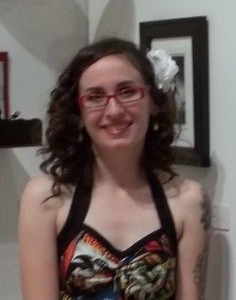 When we last saw Tarra Wood she was a graduating senior, and she had debuted work from two different series and picked up a John C. Dacey Award for artistic endeavor in the process.
When we last saw Tarra Wood she was a graduating senior, and she had debuted work from two different series and picked up a John C. Dacey Award for artistic endeavor in the process.
The first came from her self-proclaimed frat boy series, in which she employed a spare, minimalistic pop style that drew parallels to Roy Lichtenstein and an early Andy Warhol. In the pieces from this body of work, Wood provided just those spare modelling essentials necessary to suggest faces, figures and backgrounds she used to deliver wry, humorous messages with a powerful whack. FGCU frat boys breathed a collective sigh of relief when Tarra graduated lest they find themselves 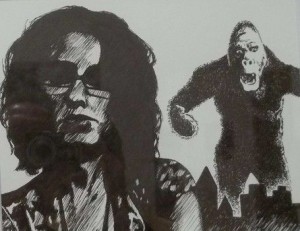 the subject of one of her acrylics in the tradition of a Taylor Swift ex-boyfriend parody.
the subject of one of her acrylics in the tradition of a Taylor Swift ex-boyfriend parody.
By contrast, I Love Monsters enabled Wood to harken back to her childhood, when her family’s favorite pasttime involved watching monster movie classics such as Dracula, Frankenstein and The Creature from the Black Lagoon. “Mystery Science Theater 3000 was a staple in my 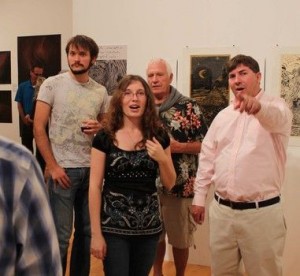 household and it taught me to appreciate and enjoy low budget films,” wrote Tarra in her Artist Statement. The series enabled her to connect her love of classic monster flicks with her love of humorous and kitschy art.
household and it taught me to appreciate and enjoy low budget films,” wrote Tarra in her Artist Statement. The series enabled her to connect her love of classic monster flicks with her love of humorous and kitschy art.
One of the works from the I Love Monsters series was a graphite drawing titled King Kong Takes the City. It highlighted Wood’s technical acuity and  evinced a definitive feel for expressive portraiture as well as a flair for the dramatic.
evinced a definitive feel for expressive portraiture as well as a flair for the dramatic.
Tarra discovered her love of texture and form when she got her first set of crayons and a coloring book filled with Disney characters just begging to be colorized. She graduated to oil painting when she was just 12, but Tarra is not a patient person when it comes to her art. She quickly switched to acrylics because of their faster drying time.
Come see what Tarra’s up to now on Thursday night. That’s when Reunion opens in the FGCU ArtLab.














 Tom Hall is both an amateur artist and aspiring novelist who writes art quest thrillers. He is in the final stages of completing his debut novel titled "Art Detective," a story that fictionalizes the discovery of the fabled billion-dollar Impressionist collection of Parisian art dealer Josse Bernheim-Jeune, thought by many to have perished during World War II when the collection's hiding place, Castle de Rastignac in southern France, was destroyed by the Wehrmacht in reprisal for attacks made by members of the Resistance operating in the area. A former tax attorney, Tom holds a bachelor's degree as well as both a juris doctorate and masters of laws in taxation from the University of Florida. Tom lives in Estero, Florida with his fiancee, Connie, and their four cats.
Tom Hall is both an amateur artist and aspiring novelist who writes art quest thrillers. He is in the final stages of completing his debut novel titled "Art Detective," a story that fictionalizes the discovery of the fabled billion-dollar Impressionist collection of Parisian art dealer Josse Bernheim-Jeune, thought by many to have perished during World War II when the collection's hiding place, Castle de Rastignac in southern France, was destroyed by the Wehrmacht in reprisal for attacks made by members of the Resistance operating in the area. A former tax attorney, Tom holds a bachelor's degree as well as both a juris doctorate and masters of laws in taxation from the University of Florida. Tom lives in Estero, Florida with his fiancee, Connie, and their four cats.